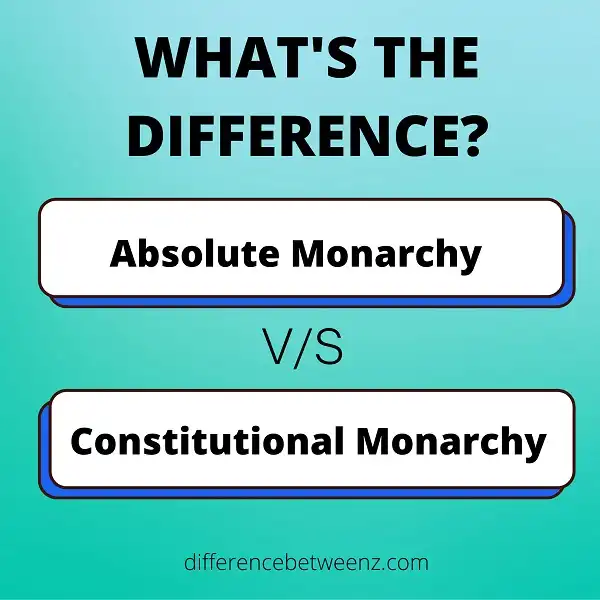There are two main types of monarchy: absolute and constitutional. An absolute monarchy is a form of government where the monarch has unlimited power. A constitutional monarchy, on the other hand, is a government where the monarch has limited power and is bound by a constitution. In this article, we will compare and contrast these two forms of monarchy. We will also look at some examples of each type of monarchy.
What is Absolute Monarchy?
Absolute monarchy is a form of government in which the monarch wields absolute power over the state and its people. The monarch is not subject to any formal limitations on his or her authority, and is typically held accountable only to God or the overarching religion. This form of government has its roots in feudalism, and was common in Europe during the Middle Ages.
In recent centuries, Absolute Monarchies have become increasingly rare, as many countries have moved towards more democratic forms of government. However, there are still a few Absolute Monarchies in existence today, such as Brunei and Saudi Arabia. Absolute Monarchy is generally considered to be a very inefficient and unjust form of government, as it concentrates all power in the hands of a single individual who is often not accountable to anyone but themselves.
What is Constitutional Monarchy?
- Constitutional monarchy is a form of government in which a monarch serves as head of state within the parameters of a written or unwritten constitution. In a constitutional monarchy, the sovereign does not make any laws—that power is instead vested in an elected parliament or legislature—but they may be involved in the duties of state, such as appointing Prime Ministers and other government ministers, and giving royal assent to legislation.
- Constitutional monarchies vary widely in their structure and balance of power between the monarch and parliament, but they all have one thing in common: the sovereignty of the people resides with the legislature, not the monarch.
- The roots of constitutional monarchy can be traced back to England, where it developed out of the medieval system of kingship. After numerous clashes between the Crown and Parliament during the 17th century, England established a constitutional monarchy with the Glorious Revolution of 1688.
- This event marked a turning point in English history, as it solidified the principle that sovereignty lies with Parliament, not the monarch. Since then, constitutional monarchy has spread throughout Europe and beyond, becoming one of the most popular forms of government in the modern world.
Difference between Absolute Monarchy and Constitutional Monarchy
- The key difference between absolute monarchy and constitutional monarchy is that absolute monarchy is a system of government where the ruler has complete control over all aspects of governance with no restrictions from any legal document or body whereas constitutional monarchy is a system of government where the ruler’s power is restricted by a legal document or body. Absolute monarchy enables the king or queen to rule by decree, whereas constitutional monarchy requires the monarch to rule according to existing laws and precedent.
- In an absolute monarchy, the monarch has complete control over the government and its machinations. This includes both executive and legislative authority. Absolute monarchs are not bound by any written constitution or laws; they may create or repeal any laws they see fit.
- In contrast, constitutional monarchs are limited in their powers by a codified set of laws. They may not rule by decree, and must instead govern in accordance with existing legislation. While absolute monarchs have more power than constitutional monarchs, they are also more susceptible to overthrow due to their lack of accountability. In a constitutional monarchy, the people have a legal mechanism through which they can change their government if they are unhappy with it; this is not possible in an absolute monarchy.
Conclusion
The two systems of government, absolute monarchy and constitutional monarchy, differ in their approach to the role of the monarch. An absolute monarchy gives the monarch unlimited power while a constitutional monarchy limits the monarch’s power and places it within a framework of law. This legal framework can be created by a constitution or an unwritten set of traditions.
In a constitutional monarchy, the monarch is often seen as a symbol of national unity and is charged with representing all citizens, even those who do not support the regime. The monarch may also have some ceremonial duties but does not actively rule the country.


